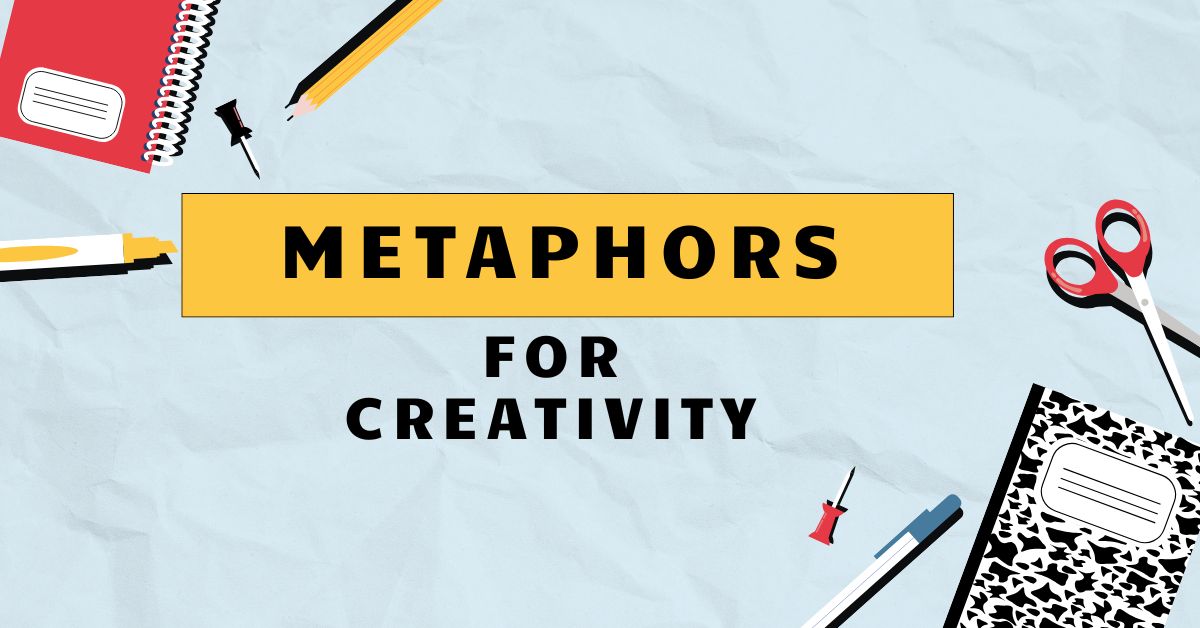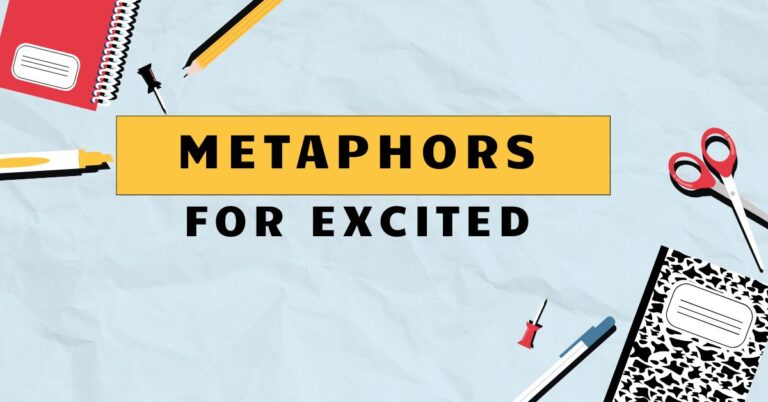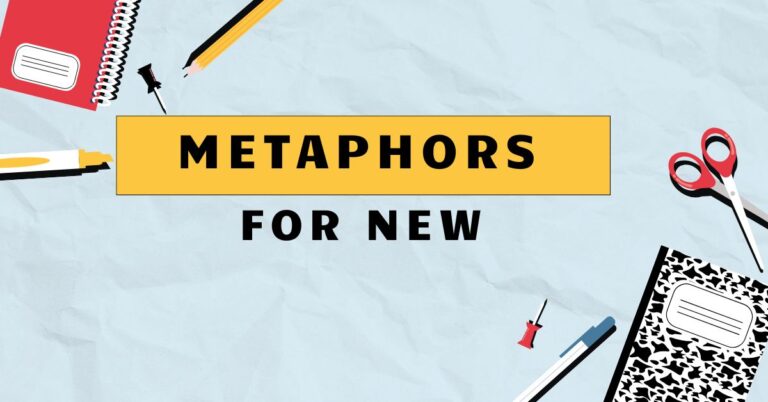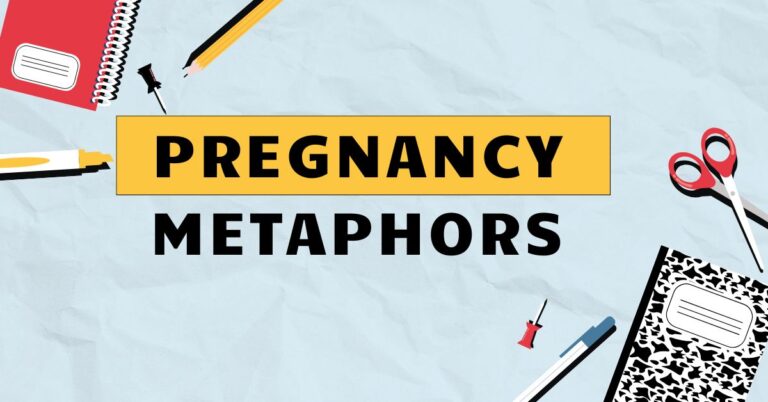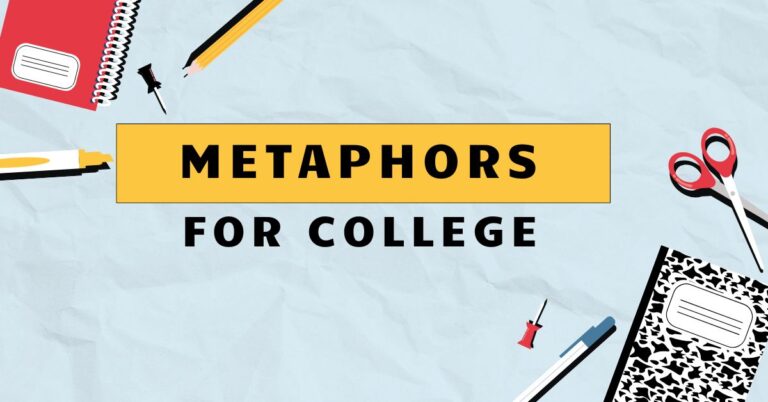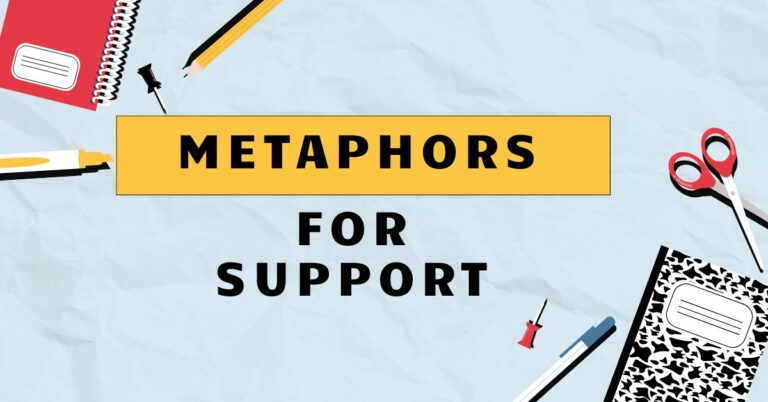43 Creativity Unleashed: Mastering Metaphors for Innovation
Metaphors are not just literary devices; they are cognitive tools that shape our understanding of complex concepts like creativity. By framing creativity through metaphorical lenses, we can unlock new perspectives and approaches to innovation.
This article explores the power of metaphors in understanding and fostering creativity, providing a comprehensive guide for anyone seeking to enhance their creative thinking. Whether you are a student, a professional, or simply curious about the nature of creativity, this article will equip you with the knowledge and tools to harness the metaphorical power of creativity.
Understanding how metaphors work within the broader context of English grammar and rhetoric allows us to appreciate their nuanced impact on communication and thought. This ability is invaluable for effective writing, persuasive speaking, and critical analysis.
This article will be particularly beneficial for writers, educators, students of literature and language, and anyone interested in exploring the intersection of language, thought, and creativity.
Table of Contents
- Definition of Metaphor for Creativity
- Structural Breakdown of Creative Metaphors
- Types and Categories of Creativity Metaphors
- Examples of Metaphors for Creativity
- Usage Rules for Creative Metaphors
- Common Mistakes with Creative Metaphors
- Practice Exercises
- Advanced Topics in Creative Metaphors
- Frequently Asked Questions
- Conclusion
Definition of Metaphor for Creativity
A metaphor, at its core, is a figure of speech that directly compares two seemingly unrelated things. It asserts a likeness or analogy between them, without using words like “like” or “as” (which would make it a simile).
In the context of creativity, metaphors are used to understand and describe the abstract and often elusive process of generating new ideas, solutions, or artistic expressions. These metaphors provide a framework for conceptualizing creativity, making it more tangible and accessible.
Metaphors for creativity function as cognitive tools, shaping our perceptions and influencing our approaches to problem-solving and innovation. They allow us to transfer knowledge and understanding from one domain (the source domain) to another (the target domain, which is creativity).
This transfer can spark new insights, reveal hidden connections, and ultimately enhance our creative potential.
The use of metaphors in understanding creativity is not merely a stylistic choice; it reflects a fundamental aspect of human cognition. We often understand abstract concepts by relating them to more concrete and familiar experiences.
By framing creativity through metaphors, we tap into our existing knowledge base and create a mental model that guides our thinking and actions.
Structural Breakdown of Creative Metaphors
The structure of a creative metaphor involves two key elements: thesource domainand thetarget domain. The source domain is the familiar concept or experience that we use to understand the target domain, which in this case is creativity.
The metaphor works by highlighting shared attributes or relationships between the two domains.
For example, in the metaphor “creativity is a seed,” the source domain is a seed, and the target domain is creativity. The shared attributes might include potential, growth, and the need for nurturing.
The metaphor suggests that creativity, like a seed, contains the potential for growth and requires careful nurturing to flourish.
The effectiveness of a metaphor depends on the clarity and relevance of the connection between the source and target domains. A strong metaphor will resonate with the audience and provide a meaningful insight into the nature of creativity.
A weak or confusing metaphor, on the other hand, may fail to convey its intended message and could even hinder understanding.
Furthermore, the structural breakdown involves understanding thegroundof the metaphor. The ground refers to the shared characteristics or similarities between the source and target domains that make the comparison meaningful.
Identifying the ground is crucial for interpreting the metaphor accurately and appreciating its implications.
Consider the metaphor “creativity is a journey.” The ground of this metaphor might include exploration, discovery, challenges, and milestones. Understanding these shared characteristics allows us to appreciate the metaphor’s suggestion that creativity involves navigating unfamiliar territory, overcoming obstacles, and achieving significant breakthroughs.
Types and Categories of Creativity Metaphors
Metaphors for creativity can be categorized based on the source domains they draw upon. Here are some common types:
Journey Metaphors
Journey metaphors frame creativity as a process of exploration and discovery. They emphasize the importance of venturing into the unknown, encountering challenges, and learning from experience.
These metaphors often involve concepts like paths, maps, destinations, and obstacles.
Gardening Metaphors
Gardening metaphors depict creativity as a process of cultivation and nurturing. They highlight the importance of providing the right conditions for ideas to grow and flourish.
These metaphors often involve concepts like seeds, soil, watering, pruning, and harvesting.
Building Metaphors
Building metaphors portray creativity as a process of construction and assembly. They emphasize the importance of planning, structure, and collaboration.
These metaphors often involve concepts like blueprints, foundations, materials, tools, and teamwork.
Light Metaphors
Light metaphors associate creativity with illumination, insight, and clarity. They highlight the ability of creativity to shed light on problems, reveal new perspectives, and inspire understanding.
These metaphors often involve concepts like sparks, rays, brilliance, and illumination.
Organic Metaphors
Organic metaphors link creativity to natural processes of growth, change, and adaptation. They emphasize the importance of flexibility, resilience, and responsiveness to the environment.
These metaphors often involve concepts like ecosystems, evolution, adaptation, and interconnectedness.
Alchemy Metaphors
Alchemy metaphors represent creativity as a transformative process, turning something ordinary into something extraordinary. They highlight the power of experimentation, intuition, and unexpected discoveries.
These metaphors often involve concepts like transformation, transmutation, experimentation, and magic.
Examples of Metaphors for Creativity
The following tables provide examples of metaphors for creativity, categorized by type. Each example illustrates how a specific source domain can be used to understand and describe the creative process.
The table below presents examples of journey metaphors, illustrating how the creative process can be likened to a journey with its own set of challenges and discoveries.
| Metaphor | Explanation |
|---|---|
| Creativity is a path. | The creative process involves following a specific direction or route. |
| Ideas are stepping stones. | Each idea builds upon the previous one, leading to a final solution. |
| Inspiration is a compass. | Inspiration guides the creative process, providing direction and purpose. |
| Brainstorming is a treasure hunt. | The process of brainstorming involves searching for valuable ideas. |
| Innovation is a voyage. | The process of innovation involves embarking on a new and challenging journey. |
| Creative block is a roadblock. | A creative block is an obstacle that prevents progress. |
| Breakthroughs are milestones. | Significant achievements in the creative process are marked as milestones. |
| Imagination is a map. | Imagination provides a mental guide for navigating the creative landscape. |
| Doubt is a detour. | Doubt can lead the creative process astray. |
| Persistence is the road. | Persistence is the key to staying on the creative path. |
| Creativity is an expedition. | The creative process is an adventurous exploration of new ideas. |
| Ideas are destinations. | The goal of the creative process is to reach a specific idea or solution. |
| Failure is a fallen tree across the path. | Failure is an obstacle that must be overcome to continue the creative process. |
| Success is reaching the summit. | Success is the ultimate goal of the creative journey. |
| Learning is collecting souvenirs along the way. | Each experience and lesson learned contributes to the creative process. |
| The creative process is a winding road. | The creative process is not always straightforward and can involve unexpected turns. |
| Collaboration is a shared journey. | Working with others on a creative project is like traveling together. |
| Originality is finding a new route. | Being original means discovering a unique and unexplored path. |
| Insight is a hidden oasis. | Insight is a refreshing and valuable discovery in the creative process. |
| Creativity is like navigating uncharted waters. | The creative process involves exploring unknown territories and facing uncertainty. |
| Feedback is a signpost. | Feedback provides guidance and direction during the creative process. |
| Experimentation is like exploring different trails. | Trying new things and testing ideas is like exploring different routes to a destination. |
| A creative block is like being lost in the woods. | Feeling stuck and unable to generate new ideas is like being disoriented in a forest. |
The table below showcases gardening metaphors, illustrating how creativity can be seen as a process of nurturing and growth, much like tending to a garden.
| Metaphor | Explanation |
|---|---|
| Creativity is a seed. | Creativity has the potential for growth and development. |
| Ideas are seedlings. | Ideas are in their early stages of development and need nurturing. |
| Inspiration is the sunshine. | Inspiration provides the necessary energy for creative growth. |
| Brainstorming is planting seeds. | The process of brainstorming involves generating many potential ideas. |
| Innovation is the harvest. | The process of innovation results in a valuable and abundant outcome. |
| Creative block is drought. | A creative block is a lack of inspiration or resources. |
| Feedback is fertilizer. | Feedback provides nourishment and support for creative growth. |
| Imagination is the fertile ground. | Imagination provides a rich and supportive environment for creative growth. |
| Criticism is pruning. | Criticism helps to refine and improve creative ideas. |
| Persistence is watering. | Persistence provides the necessary sustenance for creative growth. |
| Creativity is cultivating a garden. | The creative process involves careful planning and nurturing of ideas. |
| Ideas are like delicate plants. | Ideas need to be handled with care and attention. |
| A creative block is like a barren patch of land. | A lack of inspiration or resources can hinder creative growth. |
| Success is a bountiful harvest. | Success is the result of careful planning and nurturing. |
| Learning is like tending to the soil. | Acquiring knowledge and skills provides a foundation for creative growth. |
| The creative process is like watching a plant grow. | The creative process takes time and patience. |
| Collaboration is like sharing gardening tips. | Working with others can enhance creativity. |
| Originality is like discovering a new species of flower. | Being original means creating something unique and innovative. |
| Insight is like finding a hidden spring. | Insight is a source of inspiration and renewal. |
| Creativity is like nurturing a bonsai tree. | The creative process involves carefully shaping and refining ideas. |
| Experimentation is like trying different gardening techniques. | Trying new things and testing ideas can lead to creative breakthroughs. |
| A creative block is like a weed infestation. | Distractions and negative thoughts can hinder creative growth. |
The table below presents examples of building metaphors, illustrating how creativity can be seen as a process of constructing something new, much like building a structure.
| Metaphor | Explanation |
|---|---|
| Creativity is a building. | Creativity involves constructing something new and complex. |
| Ideas are bricks. | Ideas are the fundamental building blocks of creativity. |
| Inspiration is the blueprint. | Inspiration provides the plan for the creative process. |
| Brainstorming is laying the foundation. | The process of brainstorming involves establishing the groundwork for creativity. |
| Innovation is the finished structure. | The process of innovation results in a complete and functional creation. |
| Creative block is a collapsed wall. | A creative block is an obstacle that prevents progress. |
| Feedback is structural support. | Feedback provides reinforcement and stability for creative ideas. |
| Imagination is the architectural design. | Imagination provides the vision for the creative process. |
| Criticism is demolition. | Criticism helps to remove flaws and weaknesses in creative ideas. |
| Persistence is the mortar. | Persistence holds the creative process together. |
| Creativity is constructing a masterpiece. | The creative process involves careful planning and execution. |
| Ideas are like scaffolding. | Ideas provide temporary support during the creative process. |
| A creative block is like running out of materials. | A lack of resources can hinder creative growth. |
| Success is a well-designed and functional structure. | Success is the result of careful planning and execution. |
| Learning is like acquiring new tools. | Acquiring knowledge and skills enhances the creative process. |
| The creative process is like assembling a puzzle. | The creative process involves piecing together different elements. |
| Collaboration is like teamwork on a construction site. | Working with others can enhance creativity. |
| Originality is like creating a unique architectural style. | Being original means creating something distinct and innovative. |
| Insight is like discovering a hidden blueprint. | Insight is a source of inspiration and guidance. |
| Creativity is like building a bridge between ideas. | The creative process involves connecting different concepts. |
| Experimentation is like testing different construction techniques. | Trying new things and testing ideas can lead to creative breakthroughs. |
| A creative block is like a faulty foundation. | Weaknesses in the initial stages can hinder creative growth. |
These are just a few examples of the many metaphors that can be used to understand and describe creativity. The key is to choose metaphors that resonate with you and provide a meaningful framework for your own creative process.
The table below presents examples of organic metaphors, illustrating how creativity can be seen as a natural process of growth, change, and adaptation.
| Metaphor | Explanation |
|---|---|
| Creativity is an ecosystem. | Creativity involves a complex interplay of different elements and influences. |
| Ideas are organisms. | Ideas are living entities that grow and evolve. |
| Inspiration is the life force. | Inspiration provides the energy and vitality for creative growth. |
| Brainstorming is like pollination. | The process of brainstorming involves cross-fertilization of ideas. |
| Innovation is evolution. | The process of innovation involves adapting and improving existing ideas. |
| Creative block is stagnation. | A creative block is a lack of growth and development. |
| Feedback is adaptation. | Feedback helps to refine and improve creative ideas. |
| Imagination is the source of biodiversity. | Imagination generates a wide range of creative possibilities. |
| Criticism is natural selection. | Criticism helps to weed out weak and ineffective ideas. |
| Persistence is resilience. | Persistence allows creative ideas to overcome challenges and obstacles. |
| Creativity is like a forest growing and adapting. | The creative process involves continuous growth and change. |
| Ideas are like seeds carried by the wind. | Ideas can travel and take root in unexpected places. |
Usage Rules for Creative Metaphors
Using metaphors effectively requires careful consideration of several factors. Here are some key usage rules:
- Clarity: Choose metaphors that are clear and easy to understand. Avoid metaphors that are too obscure or abstract.
- Relevance: Select metaphors that are relevant to the topic and audience. The metaphor should resonate with the audience’s experience and understanding.
- Consistency: Maintain consistency in the use of metaphors. Avoid mixing metaphors that create conflicting or confusing images.
- Originality: Strive for originality in the use of metaphors. Avoid clichés and overused metaphors that have lost their impact.
- Context: Consider the context in which the metaphor is used. The meaning and impact of a metaphor can vary depending on the context.
It’s also important to be aware of the potential limitations of metaphors. Metaphors are not perfect representations of reality, and they can sometimes oversimplify complex concepts.
It’s crucial to use metaphors judiciously and to supplement them with other forms of explanation and analysis.
Common Mistakes with Creative Metaphors
Several common mistakes can undermine the effectiveness of metaphors. Being aware of these mistakes can help you avoid them.
| Mistake | Correct Example | Incorrect Example |
|---|---|---|
| Mixed metaphors | Creativity is a seed that needs nurturing. | Creativity is a seed that sails on the ocean. |
| Clichés | Creativity is a wellspring of ideas. | Creativity is thinking outside the box. |
| Obscurity | Creativity is a dance of possibilities. | Creativity is a fractal iteration of the self. |
| Irrelevance | Creativity is a journey of discovery. | Creativity is a mathematical equation. |
Mixed metaphors occur when two or more inconsistent metaphors are combined, creating a confusing and nonsensical image. Clichés are overused metaphors that have lost their impact and originality. Obscure metaphors are difficult to understand and fail to convey a clear message. Irrelevant metaphors are not connected to the topic and do not provide meaningful insight.
Practice Exercises
Test your understanding of metaphors for creativity with these practice exercises.
Exercise 1: Identifying Metaphors
Identify the metaphor in each of the following sentences:
| Question | Answer |
|---|---|
| 1. Ideas are the building blocks of innovation. | Ideas are building blocks. |
| 2. Inspiration is the spark that ignites creativity. | Inspiration is a spark. |
| 3. Brainstorming is a fertile ground for new ideas. | Brainstorming is a fertile ground. |
| 4. A creative block is a wall that stops progress. | A creative block is a wall. |
| 5. Originality is a rare gem. | Originality is a rare gem. |
| 6. Creativity is the engine of progress. | Creativity is the engine. |
| 7. Imagination is a playground for the mind. | Imagination is a playground. |
| 8. Insights are diamonds in the rough. | Insights are diamonds. |
| 9. Learning is the fuel for creativity. | Learning is the fuel. |
| 10. Success is the summit of the creative mountain. | Success is the summit. |
Exercise 2: Creating Metaphors
Create a metaphor for creativity using the following source domains:
| Source Domain | Your Metaphor |
|---|---|
| Music | Creativity is a symphony of ideas. |
| Cooking | Creativity is a recipe for innovation. |
| Sports | Creativity is a marathon of effort and inspiration. |
| Dance | Creativity is a dance of expression. |
| Painting | Creativity is a canvas of possibilities. |
| Sculpting | Creativity is molding ideas into a masterpiece. |
| Knitting | Creativity is weaving together disparate threads of thought. |
| Weaving | Creativity is weaving a tapestry of innovation. |
| Embroidery | Creativity is embroidering a design onto the fabric of the world. |
| Origami | Creativity is folding ideas into new forms. |
Advanced Topics in Creative Metaphors
For advanced learners, exploring the philosophical and cognitive underpinnings of metaphors can provide deeper insights. Understanding conceptual metaphor theory, which posits that our conceptual system is fundamentally metaphorical, can shed light on how metaphors shape our thinking and perception.
Investigating the role of metaphors in different cultures and disciplines can also reveal the diverse ways in which creativity is understood and expressed.
Delving into the use of extended metaphors, where a single metaphor is developed and elaborated throughout a text, can enhance your ability to craft compelling and nuanced narratives about creativity. Analyzing the metaphorical language used by creative thinkers and innovators can provide valuable insights into their thought processes and approaches to problem-solving.
Frequently Asked Questions
- What is the difference between a metaphor and a simile?
A metaphor directly compares two things without using “like” or “as,” while a simile uses “like” or “as” to make a comparison. For example, “Creativity is a spark” is a metaphor, while “Creativity is like a spark” is a simile.
- Why are metaphors useful for understanding creativity?
Metaphors provide a framework for conceptualizing the abstract and often elusive process of creativity. They allow us to transfer knowledge and understanding from familiar domains to the domain of creativity, making it more tangible and accessible.
- How can I create effective metaphors for creativity?
Choose metaphors that are clear, relevant, and original. Consider the context in which the metaphor will be used and ensure that it resonates with your audience. Avoid clichés and mixed metaphors.
- What are some common types of metaphors for creativity?
Common types include journey metaphors, gardening metaphors, building metaphors, light metaphors, and organic metaphors. Each type draws upon a different source domain to understand and describe creativity.
- What are the limitations of using metaphors for creativity?
Metaphors are not perfect representations of reality and can sometimes oversimplify complex concepts. It’s crucial to use metaphors judiciously and to supplement them with other forms of explanation and analysis.
- How can I avoid common mistakes with metaphors?
Avoid mixed metaphors, clichés, obscure metaphors, and irrelevant metaphors. Ensure that your metaphors are clear, consistent, and relevant to the topic and audience.
- Can metaphors be used to stifle creativity?
Yes, if a metaphor becomes too rigid or limiting, it can stifle creativity. It’s important to be open to new metaphors and perspectives and to avoid getting stuck in a single way of thinking.
- How does culture influence the metaphors we use for creativity?
Different cultures may have different metaphors for creativity based on their values, beliefs, and experiences. Understanding these cultural differences can broaden your perspective and enhance your ability to communicate effectively with diverse audiences.
- Are there metaphors that are universally applicable to creativity?
While some metaphors may resonate across cultures, such as those related to growth or discovery, the applicability of a metaphor depends on the specific context and audience. No single metaphor is universally applicable.
- How can I use metaphors to enhance my own creative process?
By consciously exploring different metaphors for creativity, you can unlock new perspectives and approaches to problem-solving. Experiment with different metaphors and see how they influence your thinking and actions.
- What role does imagination play in understanding metaphors of creativity?
Imagination is crucial in bridging the gap between the source and target domains of a metaphor. It allows us to visualize the connections and appreciate the nuances of the comparison, fostering a deeper understanding of creativity.
- How can analyzing metaphors used by creative individuals enhance my understanding of creativity?
Examining the metaphors used by successful creative thinkers can provide valuable insights into their thought processes, problem-solving strategies, and innovative approaches, offering a practical way to learn and apply those principles in your own endeavors.
Conclusion
Metaphors are powerful tools for understanding and fostering creativity. By framing creativity through metaphorical lenses, we can unlock new perspectives, reveal hidden connections, and enhance our creative potential.
Understanding the structure and types of metaphors, as well as the rules for their effective use, is essential for harnessing their power.
Remember to choose metaphors that are clear, relevant, and original. Avoid common mistakes such as mixed metaphors and clichés.
By consciously exploring different metaphors for creativity, you can cultivate a more nuanced and insightful understanding of this essential human capacity. Embrace the power of metaphorical thinking to unlock your own creative potential and inspire innovation in all areas of your life.
Continue to practice and experiment with different metaphors to deepen your understanding and refine your creative skills.

